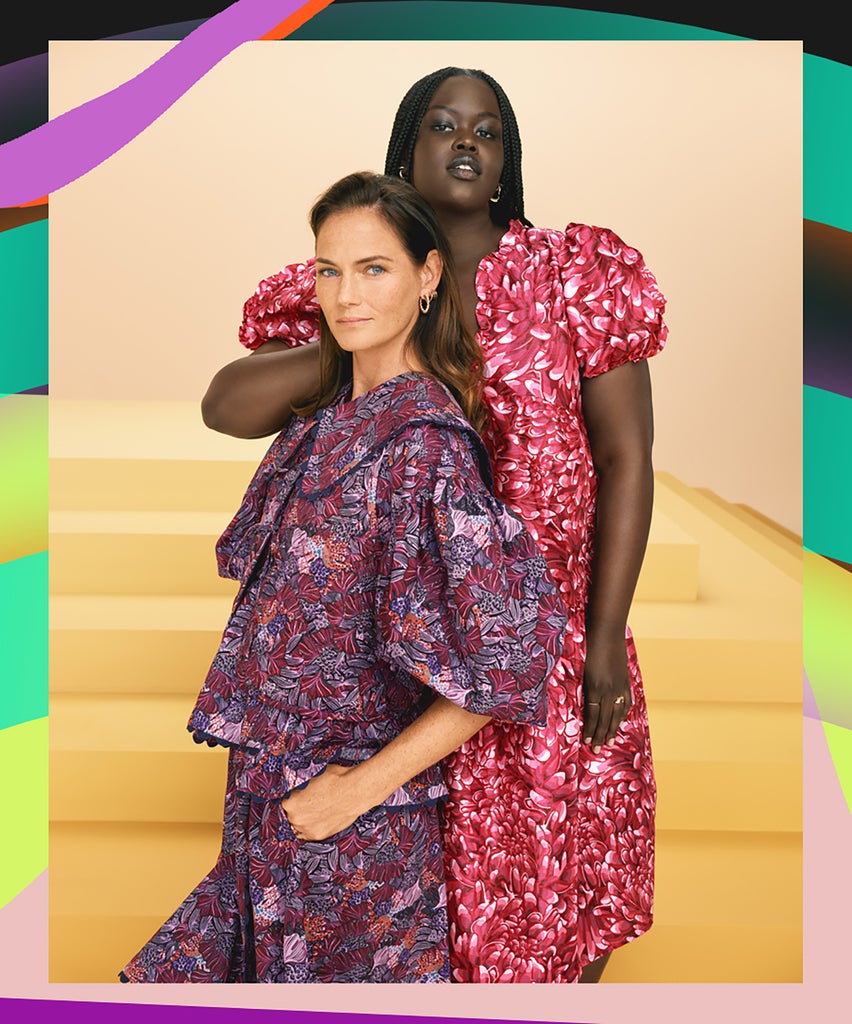
Long before launching her namesake label, Kika Vargas dreamed of designing clothes that were inspired by and rooted in her Colombian heritage. The Bogotá-born designer, who previously worked for the Italian label Missoni, says her mission was to “go back [to Colombia] to build something for us, as a community, as a country.”
That dream has become a reality for Vargas’ inner child, who used to fantasize about making clothes during family trips to Europe. A graduate of both School of the Art Institute in Chicago and the Instituto Marangoni in Milan, Vargas grew up surrounded by creativity, thanks largely to her parents, who are art collectors and gallery owners. At Missoni, Vargas learned firsthand the craft of print-making from a storied house known for its ‘70s-inspired, vibrant prints, but she longed for home. By 2010, she moved to Bogotá and kicked off her eponymous brand.
More than a decade later, Vargas is on her way to becoming an international household name. Known for its voluminous ruffles, bubble-hemmed frocks, and cottagecore-ready puff sleeves, Vargas’ label is now sold in luxury retailers worldwide, including Saks Fifth Avenue, Bergdorf Goodman, and Matches. In 2021, the brand was a finalist for the 2021 LVMH Prize, alongside names like Christopher John Rogers and Charles de Vilmorin. Just recently, Vargas became part of Target’s annual designer collaboration, alongside Sergio Hudson and La Ligne.
Even as the label grows, Vargas’ mission remains the same. Amid the Covid-19 pandemic, Vargas and her Colombia-based team started a new phase for the business, focusing on working with and sourcing from the country’s local pool of craftspeople and traditions. “It was always my dream to have something in Colombia and support the industry there,” she says. “I like saying that instead of building our country, we’re tailoring it.”
In the past, Latin American fashion designers have done things a little differently. Similarly to Vargas, designers like Carolina Herrera, Oscar de la Renta, Narciso Rodriguez, and Isabel Toledo cut their teeth and grew their brands in the United States, yet few opted for their native countries as a home base. For Vargas, this is what distinguishes a new generation of Latin American creatives from their predecessors: “Before, people would leave and never come back, and now, young creatives want to bring new tools to their country with pride.”
Beyond geographical location, Vargas’ brand is also heavily inspired by Colombia’s look and feel. You see it in the frothy textures, colorful prints, ruffled hemlines, and detailed construction that has always characterized Latin American craftsmanship. The overall effect is also embedded with a bit of fantasy, or what is known in the literary and art worlds as “magical realism.” “Latin America has a unique type of beauty that feels like magic wherever you look,” says Vargas. The garments speak to this aesthetic: ethereal frocks that are equally appropriate for a day at the market or cocktail event, as well as prints, all hand-drawn by Vargas, that come alive with stories as you look closer.

Later this month, when her collaboration with Target launches, Vargas’ label will be available to millions in the United States at a newly accessible price point. She considers it a unique opportunity to bridge the gap between mass retail and luxury design: “It’s super important that people know they can buy designer clothes for an affordable price, and that it’s still well-made in the details and materials,” she says. Although Colombians at home won’t be able to buy the collection — Target is not established in Latin America yet — Vargas is excited to introduce her brand to a new slew of customers in the US, bringing them a piece of her homeland.
“I’m just very proud,” she says.
Like what you see? How about some more R29 goodness, right here?
All The Looks From Target’s Fall Designer Collab

No comments:
Post a Comment